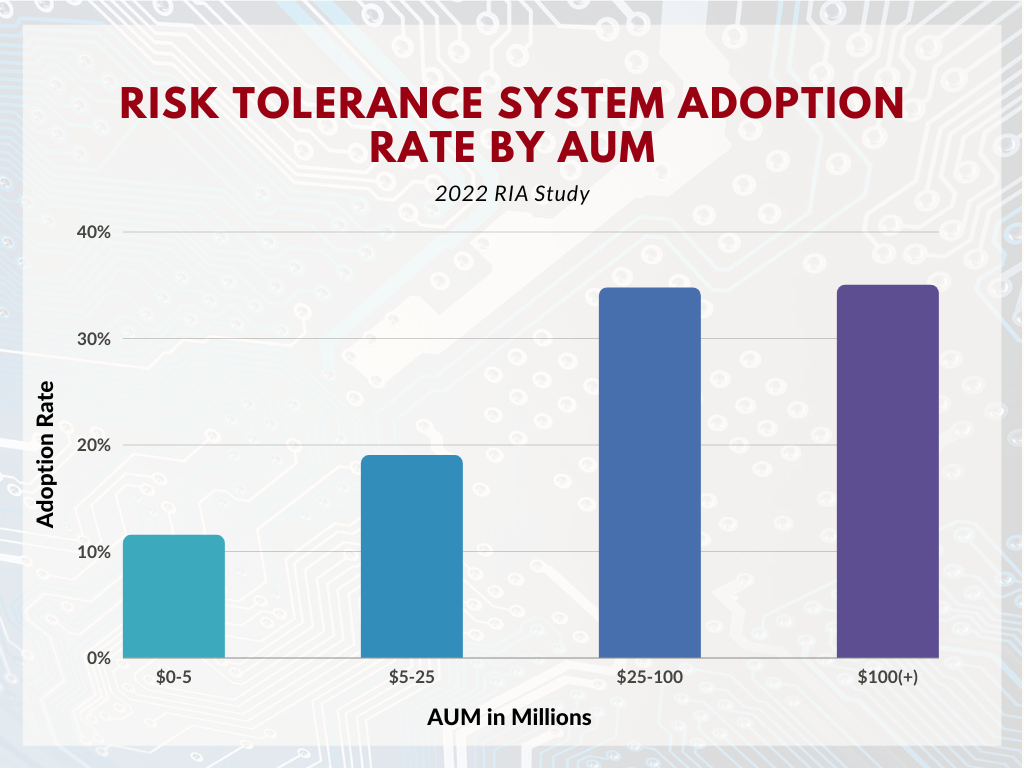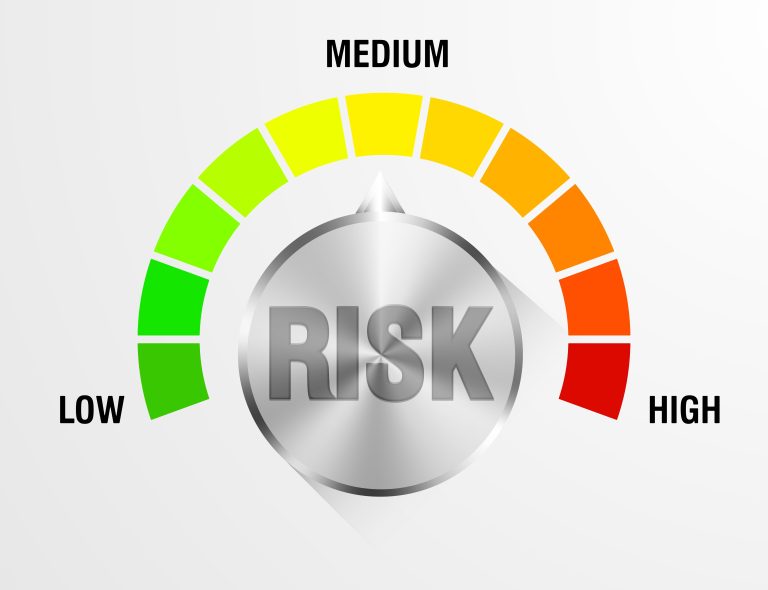Portfolio risk tolerance tools are designed to help investment advisers evaluate the proper level of portfolio risk for an individual client. These tools generally assist with initial portfolio creation and monitoring to ensure portfolios remain suitable for a client’s risk tolerance level. Compared to more traditional RIA software categories, such as customer relationship management (“CRM”) or portfolio management and reporting software, risk tolerance software has only recently gained significant momentum within registered investment adviser (“RIA”) firms. Read this blog post to learn about adoption of risk tolerance software by RIA firms.
Risk Tolerance Systems Adoption Rates
Our annual technology survey data showed 24% of surveyed RIA firms use risk tolerance software. Although there appears to be a minor decrease in adoption of risk tolerance software in recent years, our study shows a direct correlation in the size of a firm in terms of assets under management (“AUM”) and adoption.

One of the most notable findings from our 2022 study is the increase in the adoption of risk tolerance software for firms with less than $5 million AUM compared to previous years. The annual study noted an increase from 6% to 10% from 2020 to 2021, and an increase to nearly 12% in 2021.

Top Three Risk Tolerance Software Vendors
Riskalyze remains the dominant provider of risk tolerance software to RIA firms. Riskalyze continues to capture significant market share by simplifying the complexities of calculating client risk into one Risk Number®. In addition to Riskalyze, Kwanti has continued to gain market share, alongside new entrants within the space, HiddenLevers which was acquired by Orion Advisor Solutions. Rounding out the top five was long-standing risk tolerance software, Finametrica.
RIA in a Box’s annual survey focuses on technology adoption and usage. The survey, conducted in the first quarter of 2022, includes responses from more than 2,000 RIA firms. This proprietary RIA in a Box study is paired with publicly accessible data provided by the Securities and Exchange Commission (“SEC”). The annual study aims to understand different options which comprise each firm characteristic, and determine whether specific characteristics impact the growth, size or operational efficiency of RIA firms.

As investment advisers continue to turn to technology solutions for increased efficiencies, we recommend they remain aware of how risk tolerance solutions can help meet their firm’s regulatory compliance obligations to act as a fiduciary, including their duty of care. At RIA in a Box, we have integrated with Riskalyze to establish a simple supervisory workflow in which the chief compliance officer of an RIA firm can seamlessly track, manage and document the client suitability and portfolio review process enabled by the two platforms.
This post is the second of several blog posts based on our 2022 survey data, focused on the core technology solutions available to investment advisory firms. Stay tuned to learn more about favored technology solutions, such as CRM and portfolio management software.
